 EVGA's entry-level Nvidia RTX 3050, priced at $249.EVGA / Nvidia
EVGA's entry-level Nvidia RTX 3050, priced at $249.EVGA / Nvidia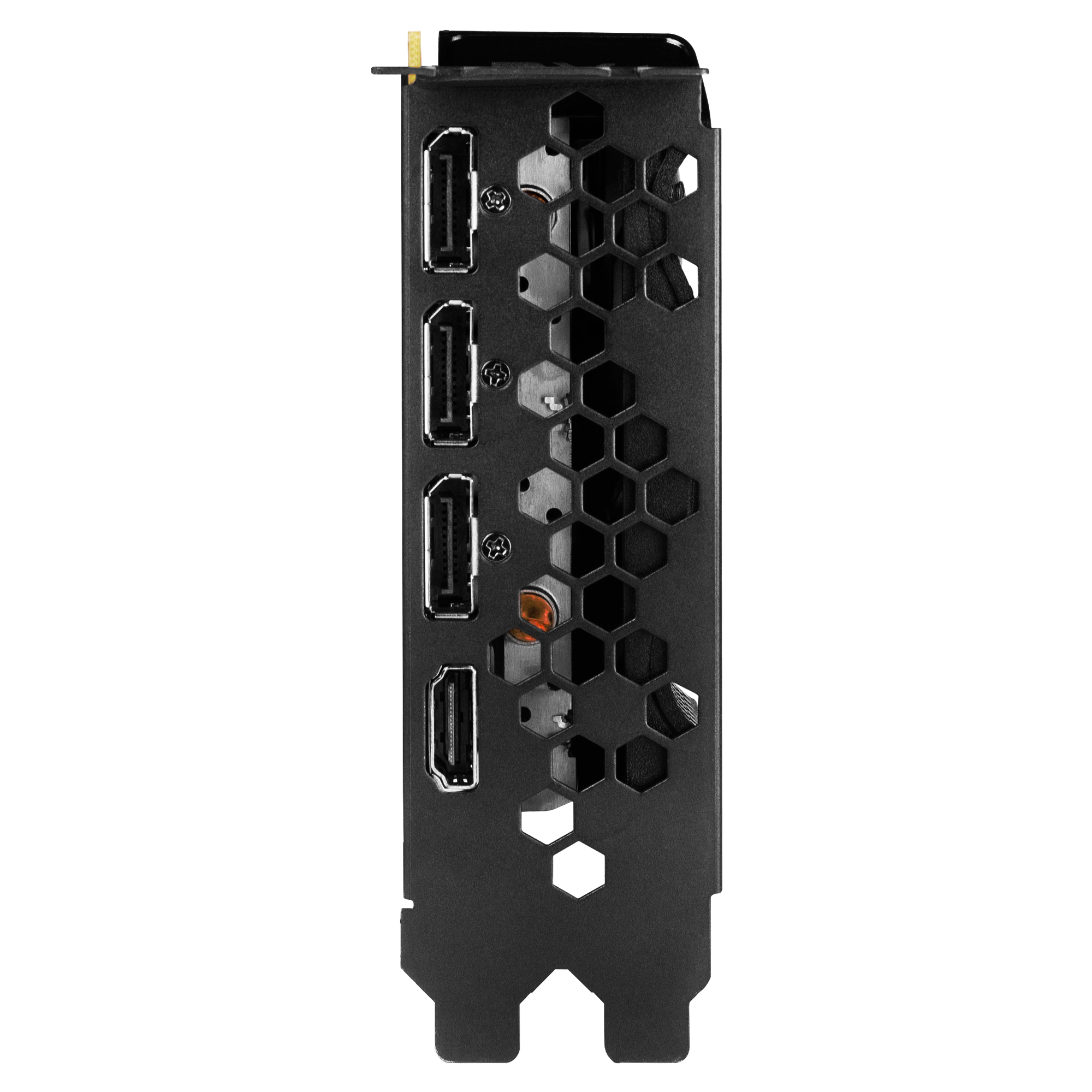 The same spread of DisplayPort and HDMI connectors as found on other RTX-branded GPUs.EVGA / Nvidia
The same spread of DisplayPort and HDMI connectors as found on other RTX-branded GPUs.EVGA / Nvidia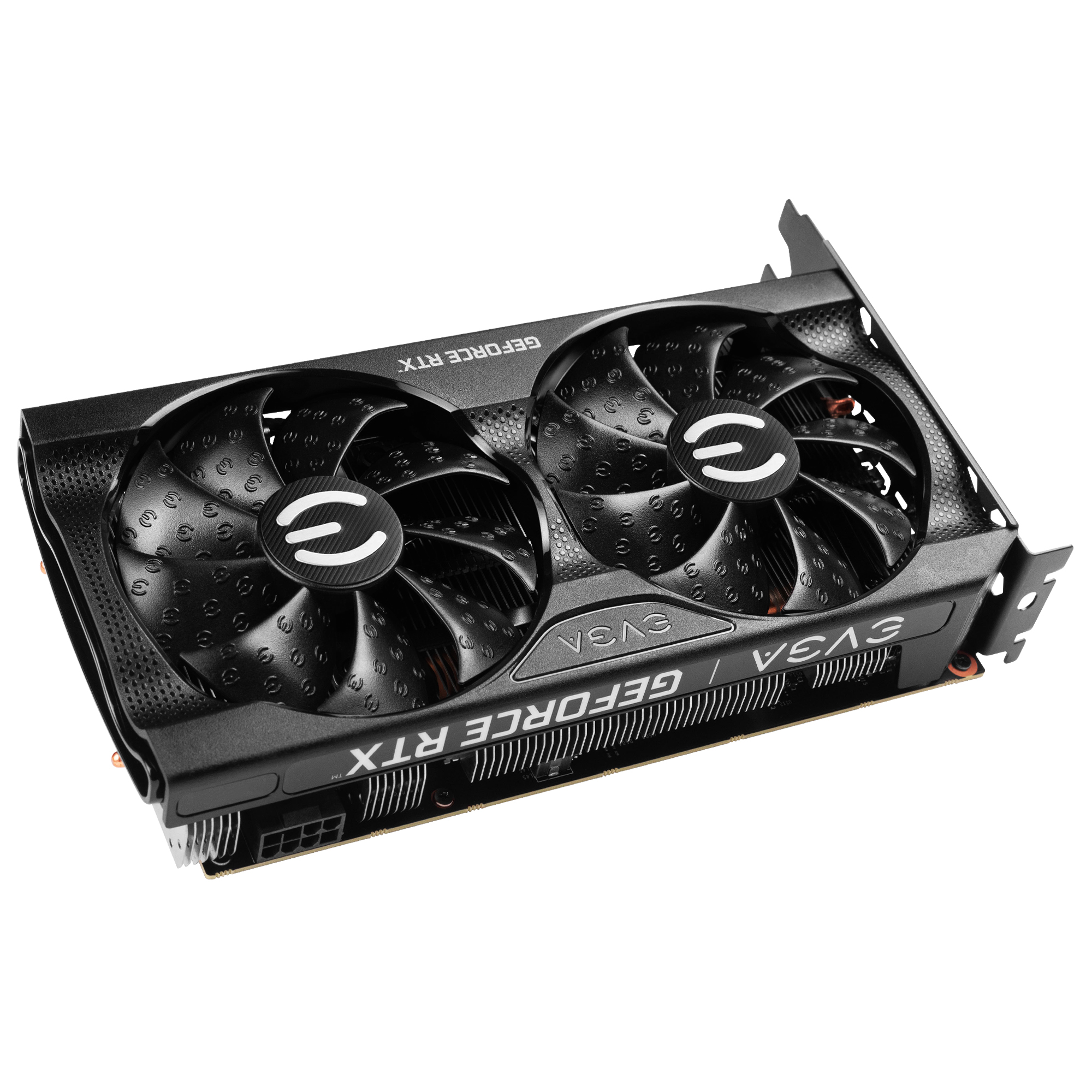 No proprietary power draw here, just a standard 8-pin connector.EVGA / Nvidia
No proprietary power draw here, just a standard 8-pin connector.EVGA / Nvidia
Until something changes, we will assume the worst about the supply-and-demand curves of the current graphics card market. The most pessimistic sign of things to come, sadly, comes from GPU manufacturers themselves, as both Nvidia and AMD have begun pricing new products a bit more in line with market realities.
January has already seen some woeful GPU launches. The mildly tweaked RTX 3080, now with 12GB of VRAM instead of 10GB, arrived earlier this month at an MSRP of roughly $1,200—a whopping 42 percent jump over the highly reviewed launch model's suggested price. On the other side of the price spectrum, last week's AMD RX 6500XT, at an MSRP of $199, has proven quite underwhelming thus far in reviews. Between its 64-bit memory interface, its 4GB of VRAM, and its penalties for PCIe 3.0 systems, the card's performance pales even in comparison to the $199 RX 5500XT... which launched in 2019.
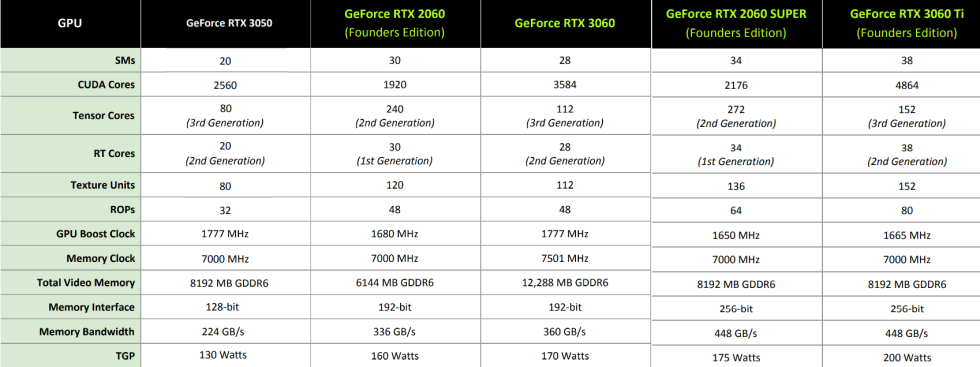
Not wanting to be left out of the latest low-end headlines, Nvidia arrives this week with the RTX 3050, which continues the longtime GPU manufacturer practice of repurposing "binned" GPUs. The card's $249 MSRP is the lowest yet in the RTX desktop series, below the $329 MSRP attached to the nearly one-year-old RTX 3060 but above the $229 MSRP of 2019's GTX 1660 Super. I get the feeling that this GPU is the monkey's paw proposition PC gamers get when we scream things like, "Please produce more graphics cards!"
Starting with the verdict: This is a 1080p card
Will you find RTX 3050 cards in the wild, let alone at prices 25 percent lower than the 3060? We're not optimistic. But if you do, be warned: even with proprietary tricks like Nvidia DLSS in its pocket, the RTX 3050 will still generally leave you fiddling with settings menus to get modern games running at 60 frames per second... at 1080p resolution. This is a card that, for the most part, maxes out at 1080p for reasonable PC performance, not only for the newest games but for some of the best games of the past seven years.
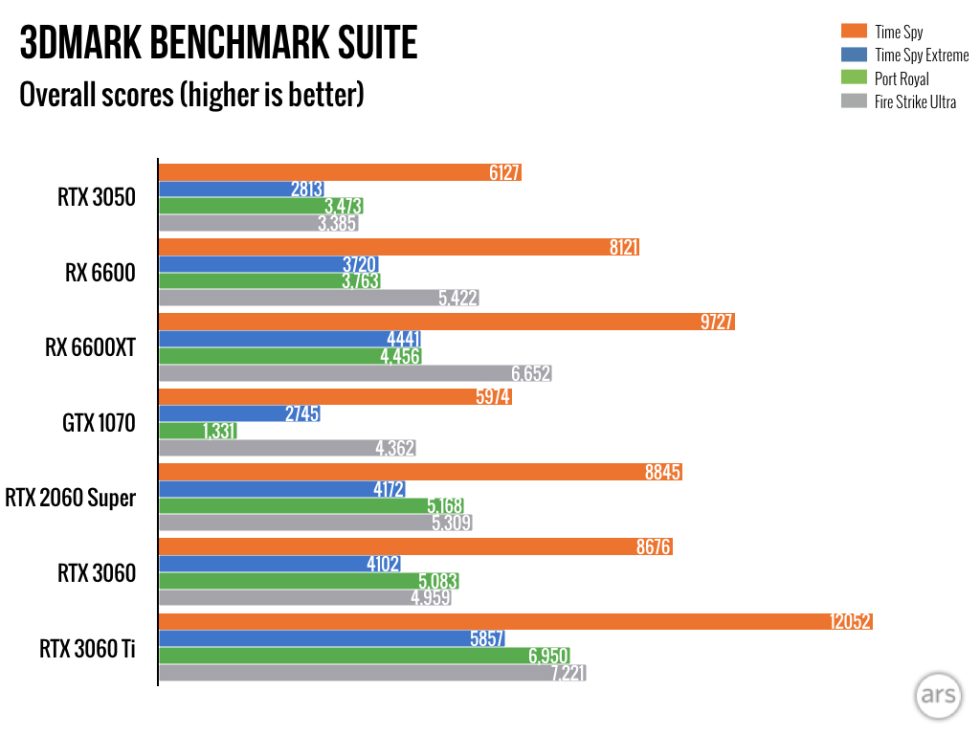
If your PC's GPU is particularly long in the tooth and you're happy maxing out your favorite PC games at 1080p resolution, you might—out of desperation—want to head to a brick-and-mortar shop when the RTX 3050 goes on sale. Retail outlets historically do a better job with "one GPU per customer" limits and other reasonable measures than online ones do.
Additionally, I recommend setting a price limit somewhere around the $329 mark, since OEMs may choose to pile onto Nvidia's MSRP with extras like ornate fans and overclock promises—and we know at least one overclocked RTX 3050 model will launch at a $329 price. But that recommendation is more about market concerns than it is about this GPU being a bargain in any sense of the word.
GTX 1070 flashbacks
Depending on the game or benchmark in question, the RTX 3050's closest performance peer on the market is the Nvidia GTX 1070, which launched at roughly $379 back in June 2016. If we lean on Ars Technica's usual battery of tests, which largely examine in-game performance, the results align remarkably close to that older card:
Unlike the RTX 2060 Super, which provided performance upticks across the board compared to the GTX 1070, the RTX 3050 simply cannot muster the same progress this many years later. For some rendering scenarios, the silicon shortcomings of the RTX 3050 are very noticeable.
But the above and below charts emphasize something that is critical in any graphics card benchmarking tests: how a GPU handles overkill settings and higher resolutions so that a given workload is GPU-specific and can be compared across cards. That default scenario sadly assumes that you have a lot of choices in the marketplace. In the here and now, however, seeing that the RTX 3050 disappoints in all-settings-maxed 1440p situations isn't necessarily useful; you can't expect to buy a rival card that is either cheaper or more likely to be future-proof.
If you're still reading this review, you're likely eager to just get a working graphics card with 1080p performance as a baseline. Will the RTX 3050 cut it? In a word: mostly. I have found that its strengths emerge on a case-by-case basis, but there are few legitimate 1440p applications.
RT + DLSS - 3050 impact = GPU math in 2022
I'll start with ray tracing, which is an icing-on-top toggle you might hope to access with a modern GPU, even one whose specs have been pared back pretty severely. My RTX 3050 tests looked at a collection of ray-tracing-compatible games, and they indeed work... if you're happy dropping resolutions to the roughly 720p mark. On my testing rig, I could run the ray tracing stunner Control at that paltry pixel resolution with general settings turned down to "medium" and ray tracing settings left untouched, and my lowest frame rates hovered around 58 fps (with an average closer to 62 fps).
Nvidia may respond to this anecdote by pointing to its DLSS system, which Control supports, and how it can neatly upscale compatible games to get them to performant levels. In my opinion, that sales pitch is true—if a game upscales from a base pixel resolution of no less than 900p. But the 60 fps performance I'm talking about is with DLSS starting from a 720p base, then upscaling to 1080p, and it serves as a stark reminder that DLSS can only properly upscale to a certain extent. A DLSS upscale from 720p to 1080p is certifiably blurry, complete with pixels that suddenly appear or disappear.
I still think Control looks fantastic with this tradeoff, where vibrant, world-altering ray tracing effects work on the RTX 3050 at the cost of blurrier visuals and occasional upscaling artifacts. You may not agree, in which case you can turn off ray tracing and get raw 1080p performance close to 60 fps on the RTX 3050. Or you can play around with settings to try other mostly acceptable options, like putting general settings at "medium," ray tracing settings down to "medium," and raw resolution boosted to 1080p (which, combined, makes the game run at roughly 46 fps on my testing rig).
Sub-1080p resolutions can get the RTX 3050 GPU to 60 fps on other ray-tracing-intensive games as well. Minecraft RTX's default DLSS implementation brings it close to 58 fps on average when upscaling from something close to 720p, and Quake II RTX can lock to 60 fps when it runs at around 900p (a resolution it automatically reaches via its own handy dynamic scaling system). Yet the GPU-intensive Watch Dogs Legion pounds the RTX 3050 with ray tracing enabled, requiring an even more aggressive resolution-scaling scenario than the other tested games to get it anywhere near a consistent 60 fps refresh. (Or, of course, disable ray tracing on all of these games to get them closer to decent native 1080p performance.)
And as a reminder, AMD's recent salvo in this price category, the RX 6500XT, completely falls apart in ray-tracing-intensive benchmarks, so at least the 3050 gives you the option of some ray tracing action.
Making peace with tolerable 1080p numbers
As far as those tests are concerned, the scaled-back specs of the RTX 3050 push its ray-tracing-specific results well below the same tests conducted with the 2.5-year-old RTX 2060 Super. That aligns with the overall tale of the tape, in terms of specs like CUDA cores, texture units, and memory bandwidth.
If you've missed out on the past seven or so years of modern PC software, the RTX 3050 is still competent enough to run many 3D games without any ray tracing effects at a 1080p resolution. Grand Theft Auto V, for example, needs some settings massaging to approach a 60 fps minimum at 1080p resolution on the RTX 3050. On my aforementioned testing rig, I had to drop settings like anti-aliasing quality, reflection quality, and grass density, while leaving all other meters maxed out, to get a "real gameplay" benchmark average of 81.9 fps, which came with a "1 percent low" floor of 58.7 fps—meaning it rarely dropped frames beneath the 60 fps standard. I had to fiddle with sliders a bit more to get the demanding 2018 adventure game Assassin's Creed Odyssey to a 1080p/60 fps threshold, dropping it two steps down from "ultra high" to "high" at 1080p—and I did the same thing with its 2020 sequel Assassin's Creed Valhalla to produce similar 1080p/60 fps performance.
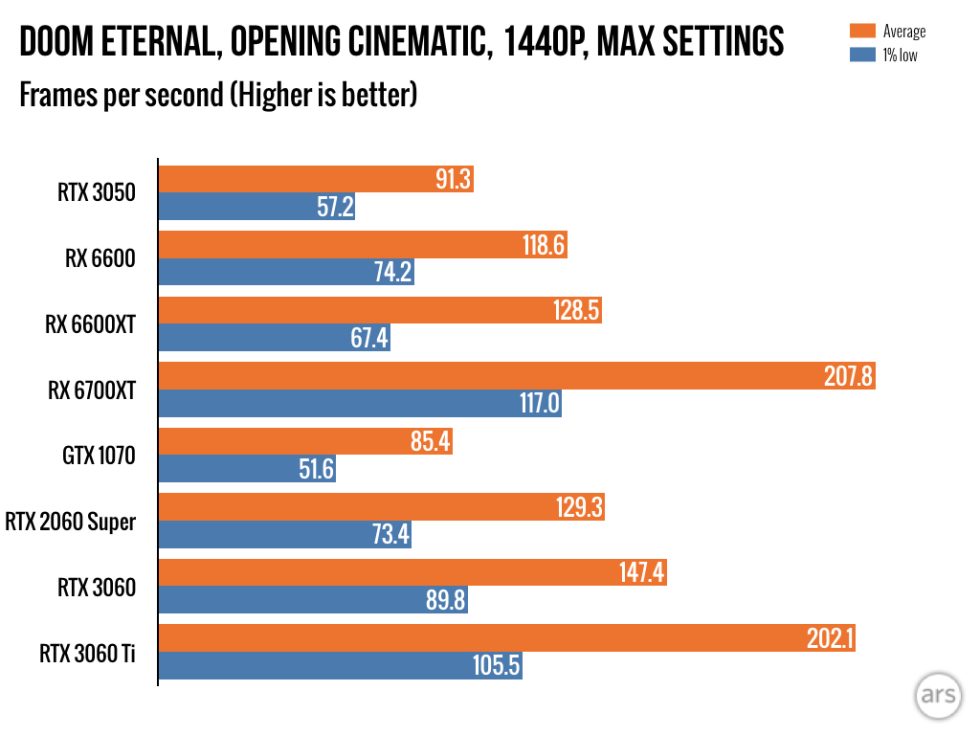
More efficient PC fare, meanwhile, can push the RTX 3050 to impressive 1440p numbers, most notably the idTech 6 and idTech 7 games Doom 2016, Doom Eternal, and Wolfenstein Youngblood. Each of these games can run at max settings with ray tracing disabled and get into 1440p benchmark averages of between 77 and 100 fps, and you can tweak settings even further to get their frame rate bottoms to exceed 60 fps (or keep all settings maxed out and stomach a few dips to the mid-50s). The latter two games on that list also support Nvidia DLSS, and they do look pretty good when upscaling 900p and 1080p signals to 1440p resolution, should you want to flex that RTX 3050 feature.
As far as very recent PC software is concerned, the RTX 3050 offers some hope. The 2018 PlayStation 4 smash God of War just got an impressive, highly optimized port to PC, and Nvidia's latest low-end RTX card can run the game at a mix of "original" and "high" settings at a native resolution of close to 1080p, upscaled by DLSS to 1440p, and maintain a frame rate average of roughly 60 fps. Capcom's Monster Hunter Rise was previously a Nintendo Switch exclusive before landing on PC earlier this month, and its low-powered Switch heritage likely explains why the RTX 3050 can put up a roughly 65 fps average with all settings maxed at 1440p.
And my spot checks of the recently remastered Crysis trilogy showed generally promising 1080p/60 fps performance with settings turned to the "high" preset... however, that's with all ray tracing disabled, as the RTX 3050 simply can't process even the "performance" ray tracing toggle. (The RTX 3050 ray tracing performance in the trilogy is better than comparable AMD GPUs, to be fair, but that's not saying much.)
A note about last-minute benchmarking
In an alternate universe with a reasonable GPU market, I would expect the RTX 3050 to be one of two things: either far more powerful for the 1080p set, with enough horsepower to legitimately push into more 1440p gaming across the board (either with or without DLSS trickery), or just plain cheaper. If you track the 3050 on a plot line of prices and power with its RTX 2000 brethren (or, heck, its GTX 1000 ancestors), there's no getting past the severe drop-off in price-to-performance ratio.
Some of that comes from the RTX 3050 having some headroom to spare if it is safely overclocked. I learned this inadvertently because Ars' review hardware, the EVGA RTX 3050 XC Black, was accidentally loaded with EVGA's backplate-mounted, overclocked 3050 firmware. That meant all of my earliest tests were run at speeds and temperatures that would not have been warranty-friendly.
When I re-ran those tests—36 hours before this review went live, mind you, thanks to a last-minute email from EVGA about its factory error and correction—I found I had to tweak settings a bit more to lock down 1080p/60 fps performance. EVGA charges $80 more for its backplate-mounted 3050 model, at $329. According to my tests, that 33 percent jump in price accounts for as much as 10 percent more performance (as seen in GTA V, Quake II RTX, and Doom Eternal), though across the board, the OC model's jump can be as little as half a frame per second (especially when ray tracing is enabled).
Speaking of overclocking, my oversight in double-checking the clock and boost speeds on my testing rig arguably happened because of how quietly the EVGA version of the RTX 3050 runs. I wonder if the incorrect firmware worked so well because of how flexible the RTX 3050 might be to manual settings trickery. Your mileage (and warranty) will vary, obviously—and I should also point to weird bugs I ran into with my tests of EVGA's 3050 model. The below blue screen of death, which includes an Nvidia DLL in its log, sprung up 12 hours after I had updated the card's firmware and was apparently triggered by uploading RTX 3050 pictures to Ars Technica's database via our web client tools. What does that mean? Search me.

We are the bringers of ho-hum GPU news
Yet, in spite of the RTX 3050's disappointing performance compared to older cards, AMD set the stage for Nvidia's latest lower-priced RTX card to look, well, tolerable in comparison. Last week's RX 6500XT was a disaster by all accounts, especially because of the performance penalties it put on systems that max out at PCIe 3.0 bandwidth—as in, the machines most likely to use the card. Nobody with a top-of-the-line PCIe 4.0 system is buying either the RX 6500XT or the RTX 3050.
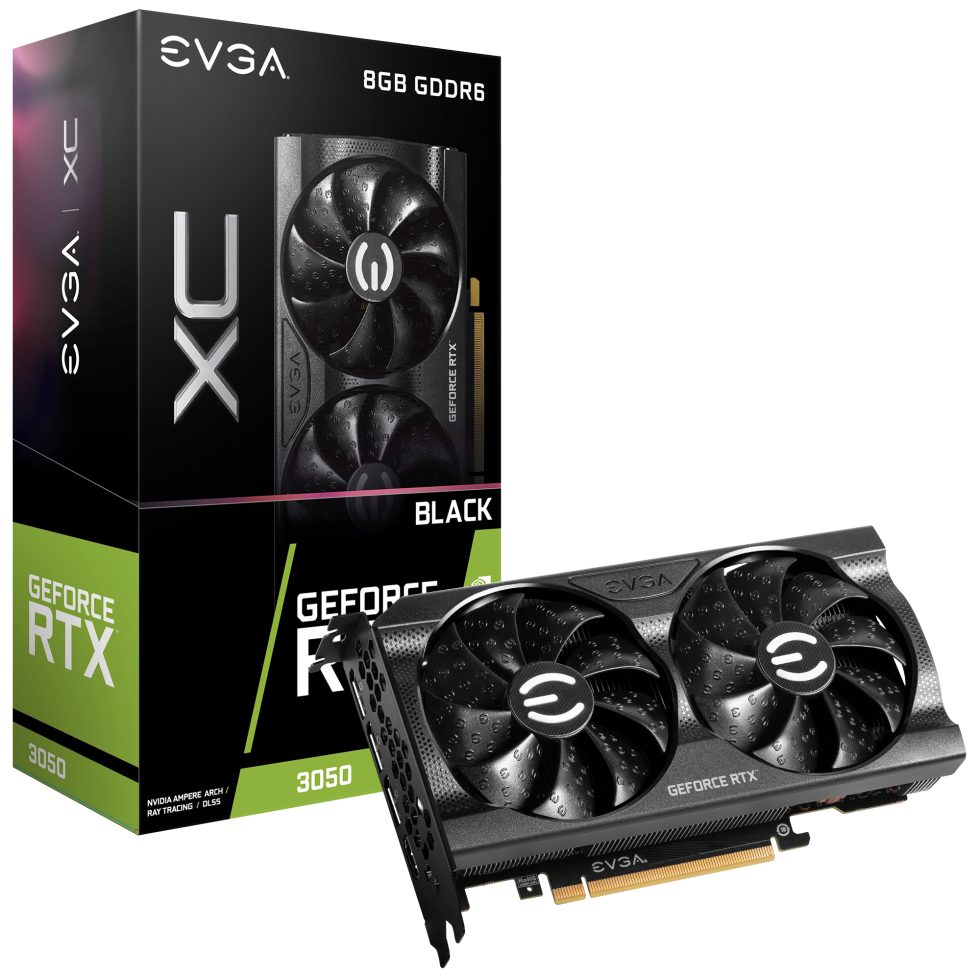
When I moved past the battery of typical GPU tests and got around to playing 3D games on the RTX 3050, I found I could still generally run software at "high" or "very high" settings—not maxed—at 1080p resolution and expect mostly capable frame rates. That general result for a $249 MSRP certainly compares favorably to AMD's $379 RX 6600XT, which hovers weirdly between 1080p and 1440p performance. (MSRPs don't necessarily reflect what you'll see in the marketplace, but that whopping 33 percent drop will likely mean the RTX 3050 will establish a lower average price on store shelves and eBay listings alike.)
But this card lives in the shadow of Nvidia's own GTX 1050 and 1060 families, and that shadow darkens the value proposition here. 1080p is by no means a satisfying pixel resolution for modern PC gaming at a GPU price above $200, especially in a space that favors ultrawide screens (usually no less than 1440p in vertical resolution). If you've been waiting since the launch of the GTX 1070 for a worthy GPU upgrade to match a newer, bigger monitor, this isn't necessarily it.
At the same time, the RTX 3050 could have been worse. Until the doom and gloom of inflated GPU prices and crypto-mining pains subside—which could theoretically be any day now, should this month's cryptocurrency crash persist—the pared-down RTX 3050, and its welcome configuration of ray tracing and DLSS cores on top of its otherwise meek specs, might not be a bad stopgap card to lean on for the next nine to 15 months.
That advice holds until an Nvidia RTX 3060 Ti or AMD RX 6600XT appears anywhere near retail price in your vicinity, of course. In which case, you should buy one of those superior options instead.
Ars Technica may earn compensation for sales from links on this post through affiliate programs.
Listing image by EVGA / Nvidia
Technology - Latest - Google News
January 26, 2022 at 09:00PM
https://ift.tt/3rQEmRK
Nvidia RTX 3050 review: For an overpriced 1080p GPU, this could’ve been worse - Ars Technica
Technology - Latest - Google News
https://ift.tt/2AaD5dD
https://ift.tt/35zzbtW
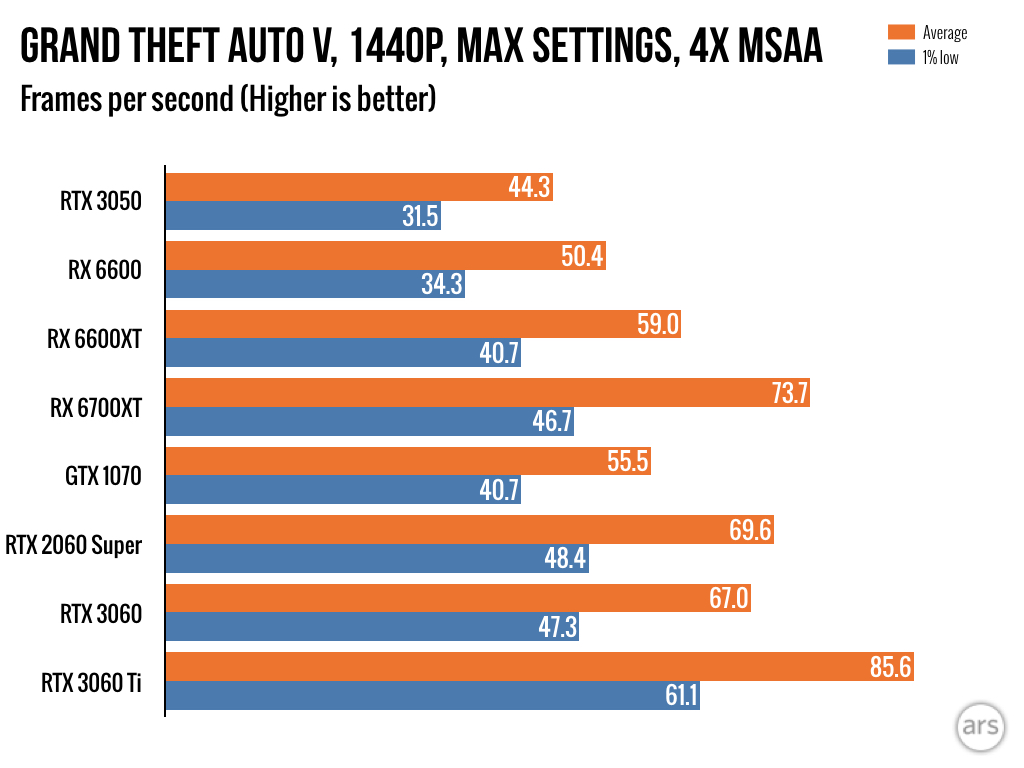
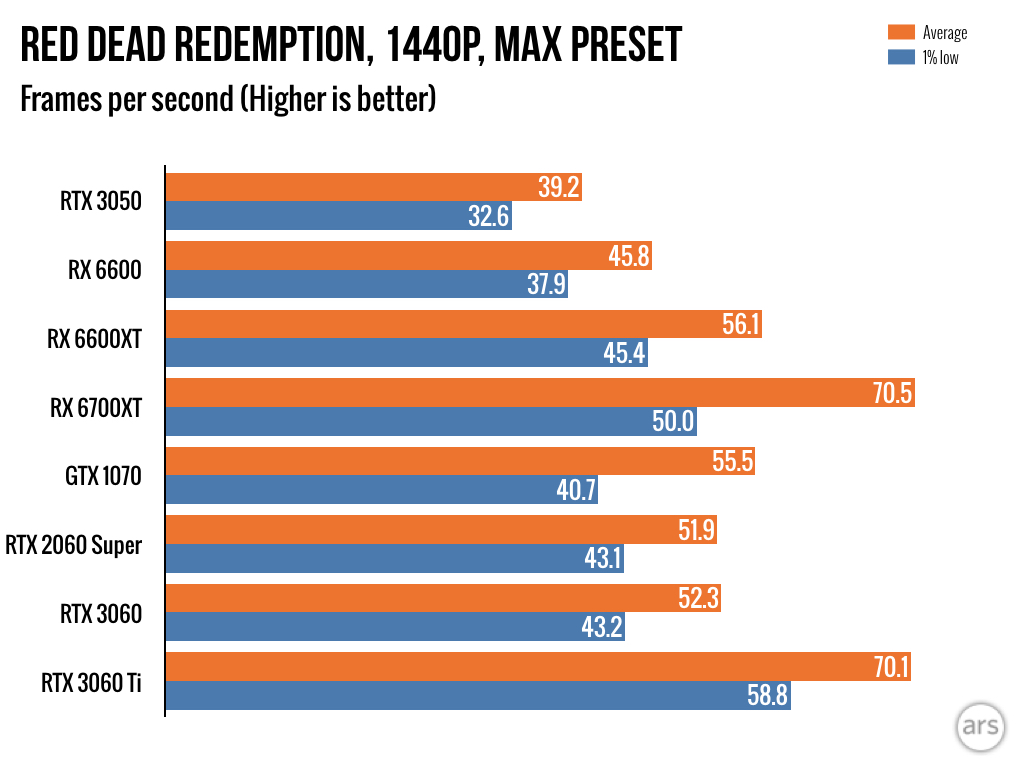
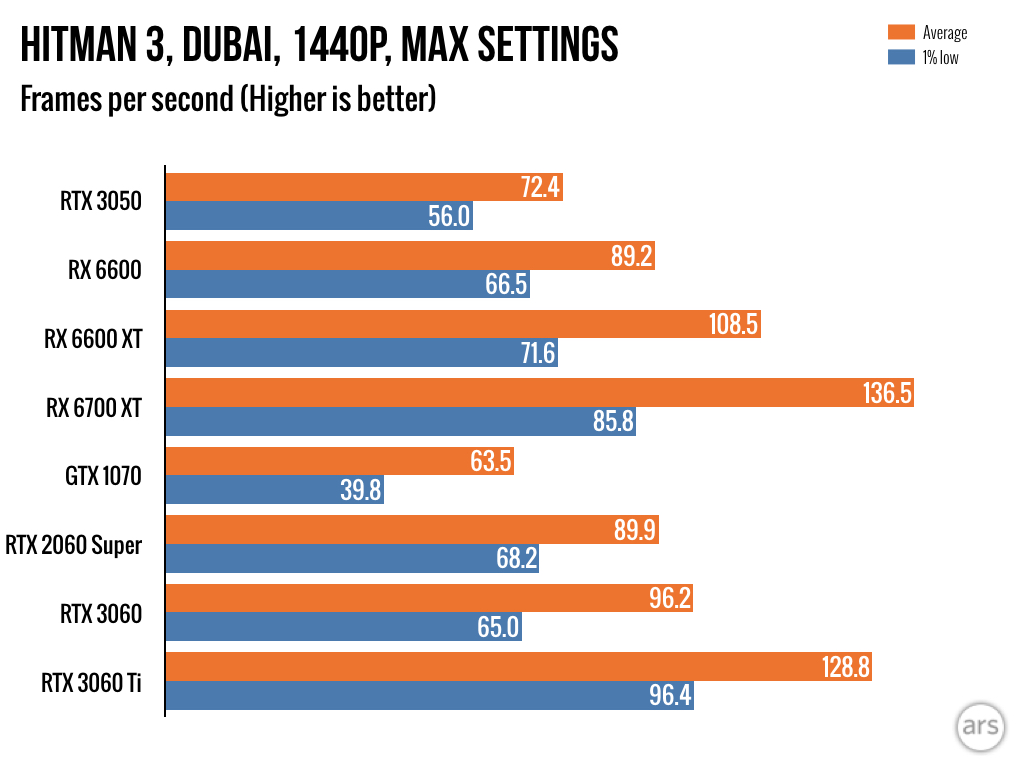
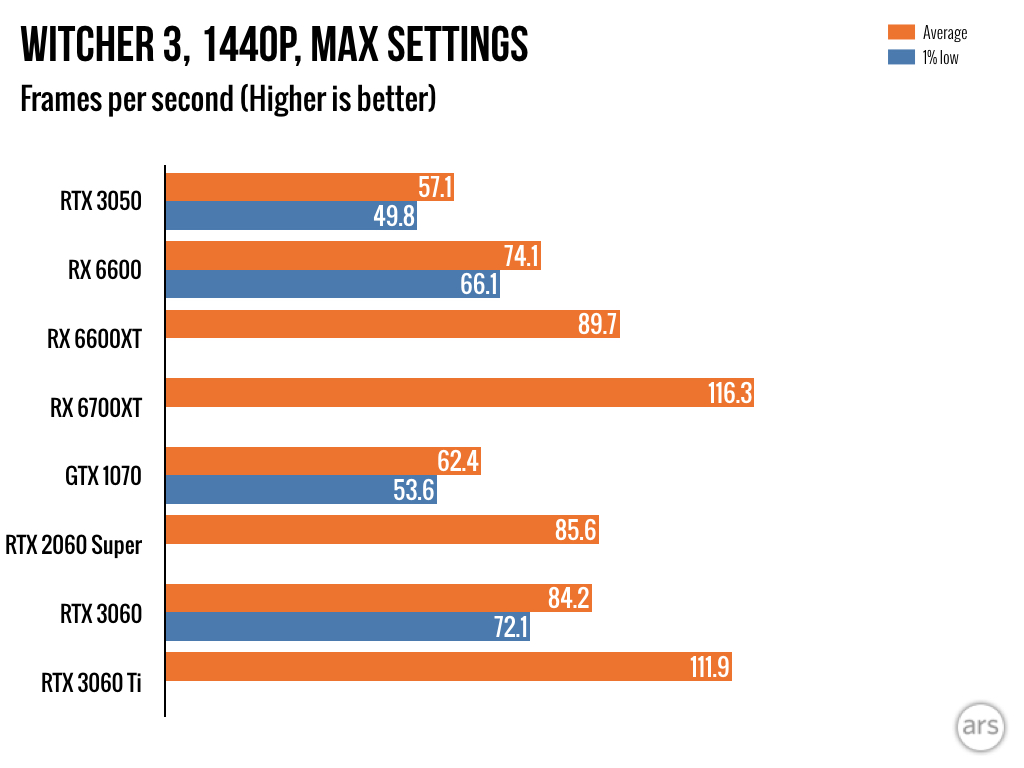
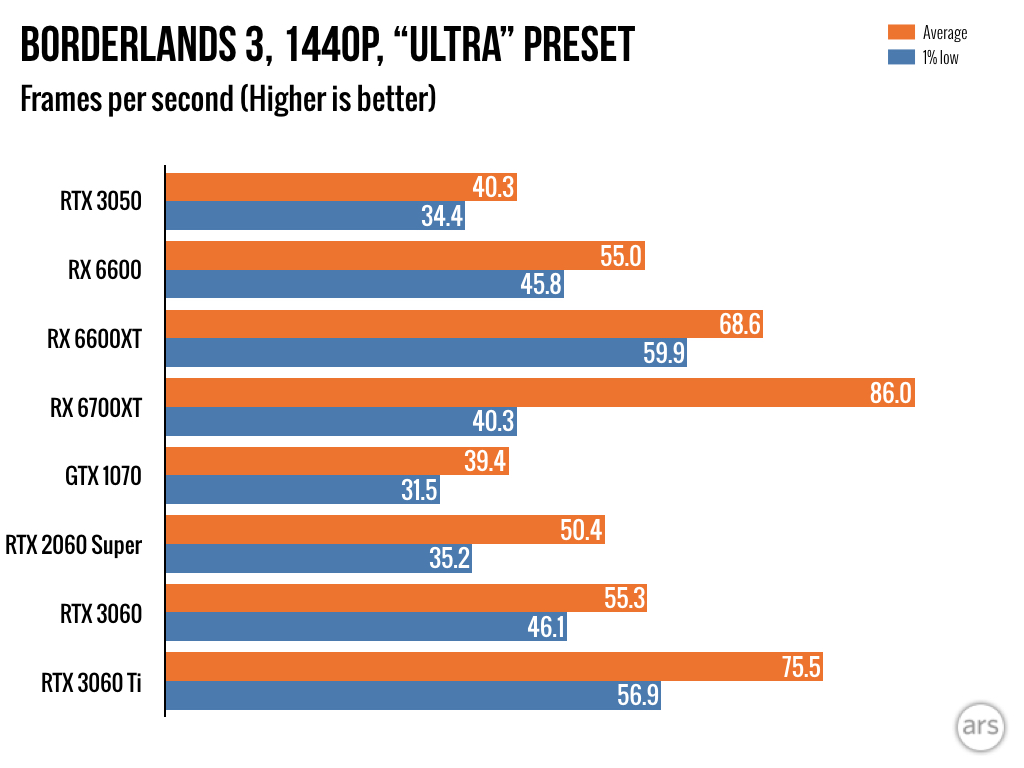
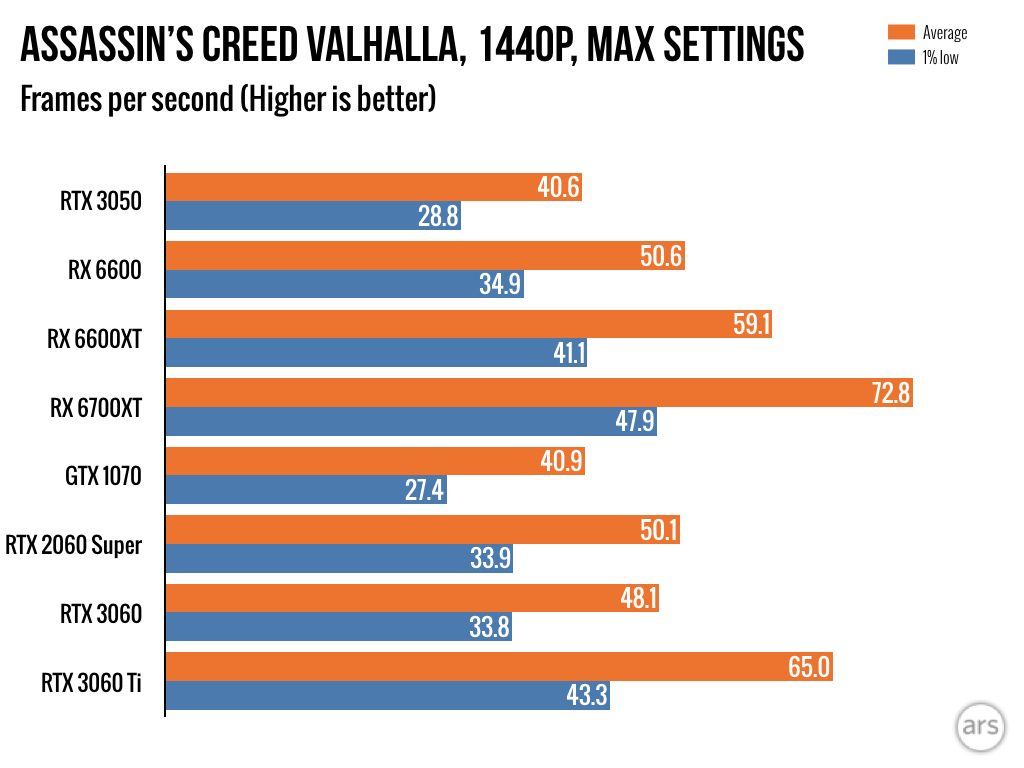
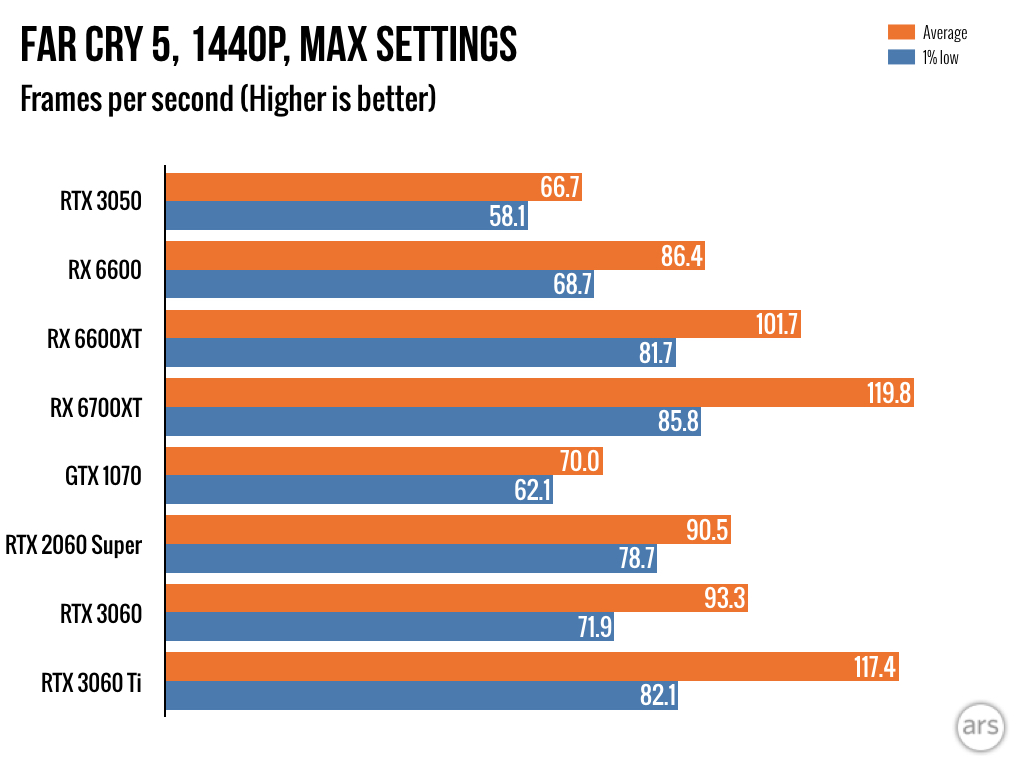
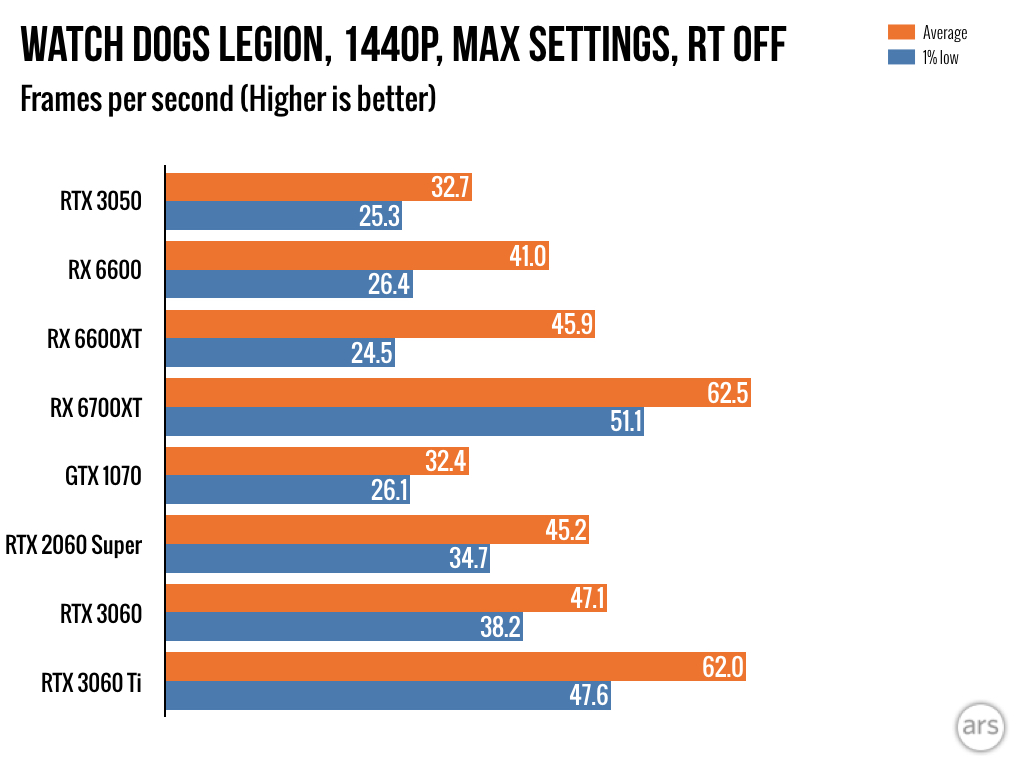
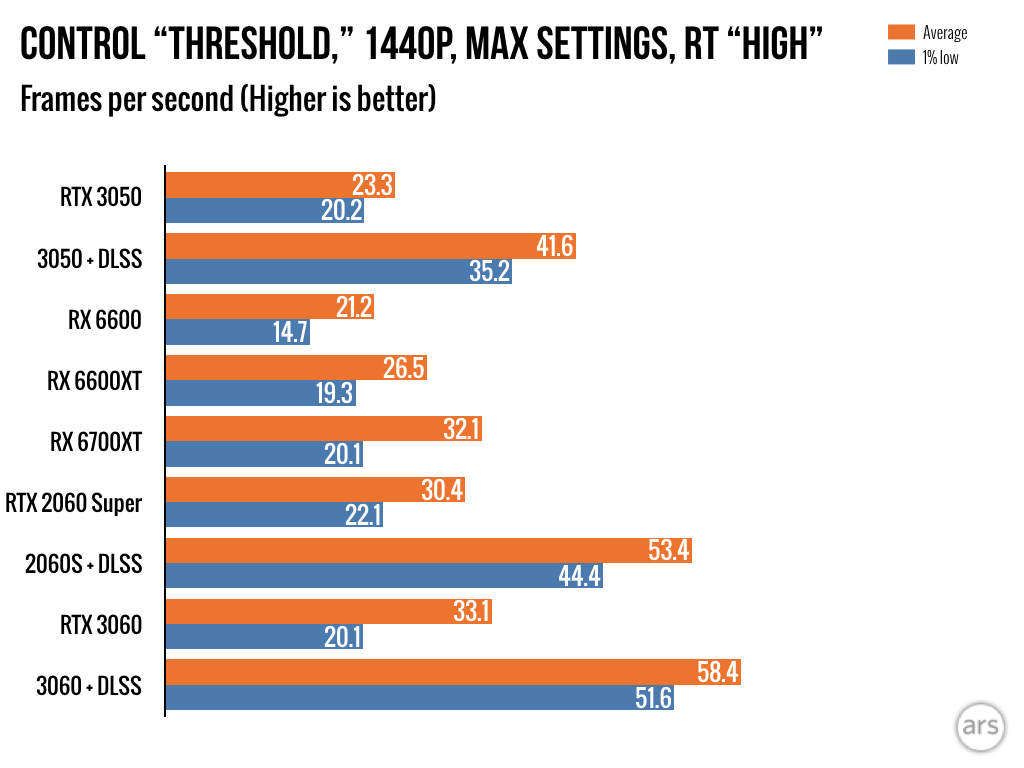
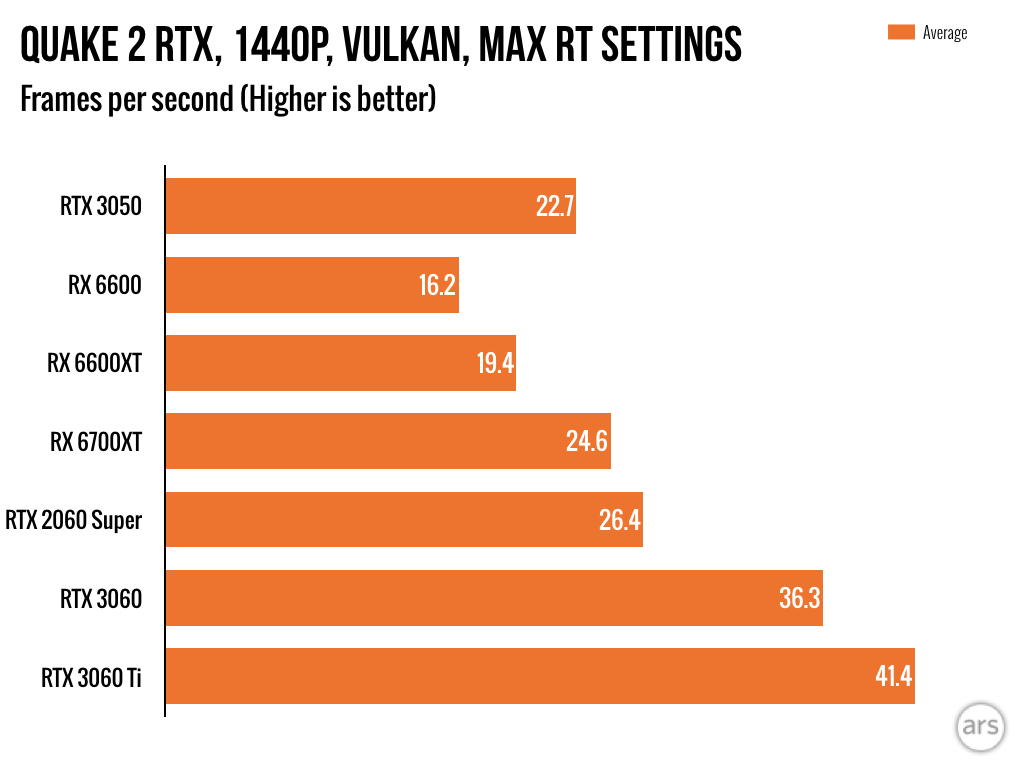


0 Commentaires